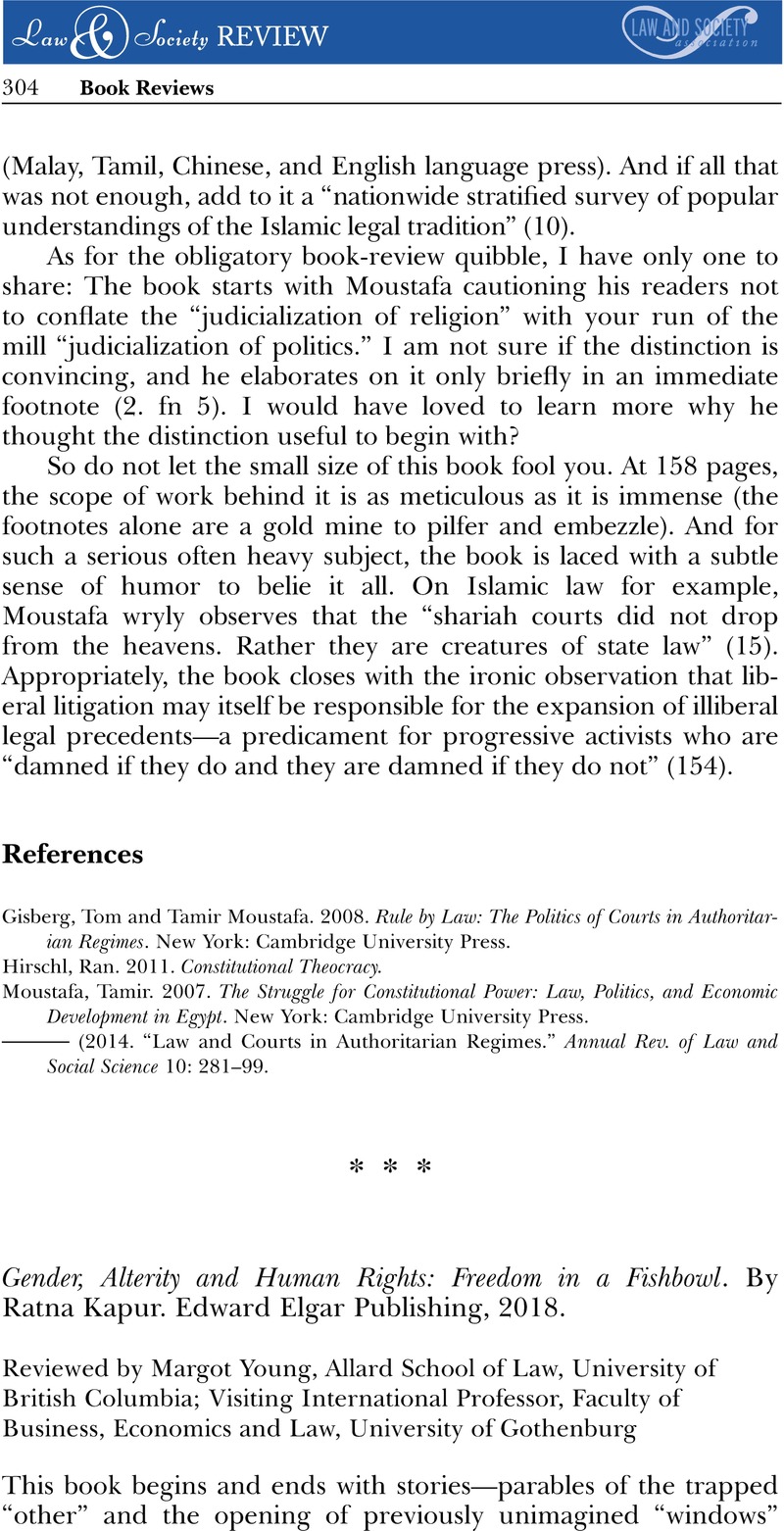No CrossRef data available.
Article contents
Gender, Alterity and Human Rights: Freedom in a Fishbowl. By Ratna Kapur. Edward Elgar Publishing, 2018.
Review products
Gender, Alterity and Human Rights: Freedom in a Fishbowl. By Ratna Kapur. Edward Elgar Publishing, 2018.
Published online by Cambridge University Press: 01 January 2024
Abstract
An abstract is not available for this content so a preview has been provided. Please use the Get access link above for information on how to access this content.

- Type
- Book Reviews
- Information
- Copyright
- © 2020 Law and Society Association.
References
Kwan, Peter. 2002. “The Metaphysics of Metaphors: Symbiosis and the Quest for Meaning.” UMKC Law Rev. 71: 325.Google Scholar


